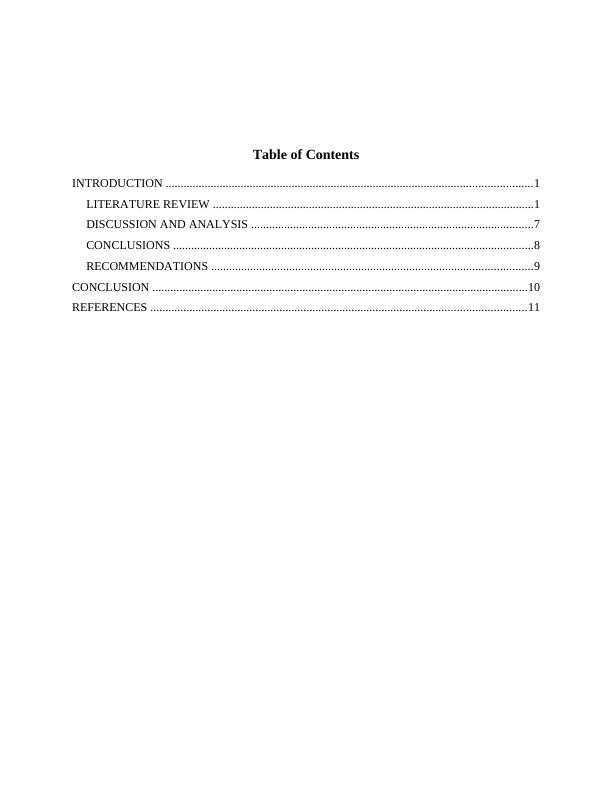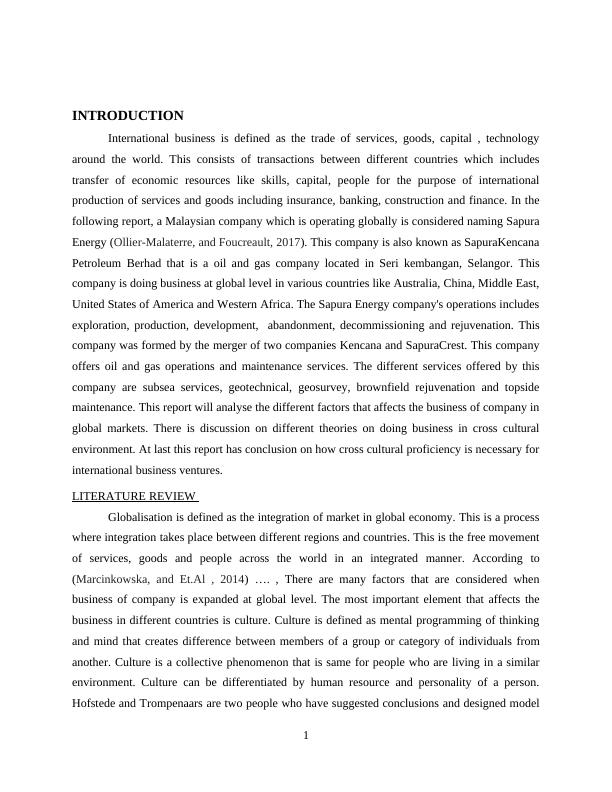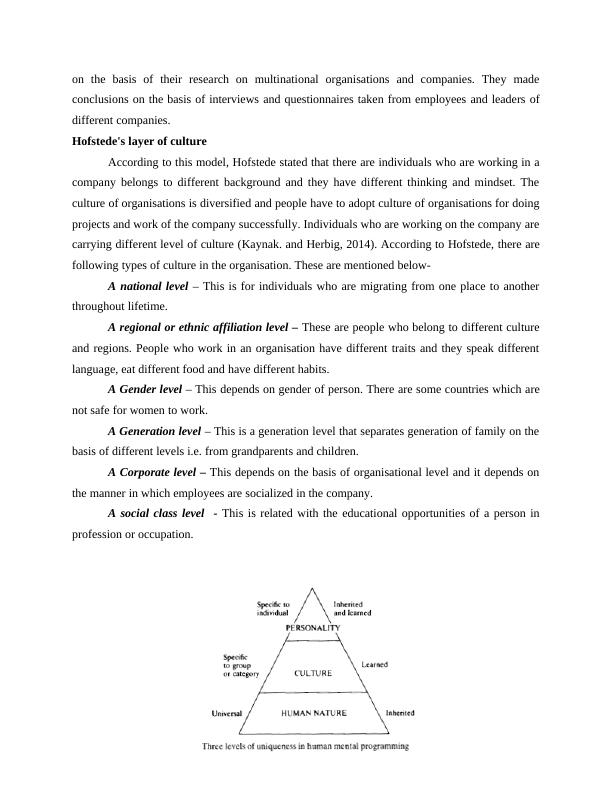(PDF) Managing cross-cultural diversity
Added on 2021-01-02
13 Pages3630 Words352 Views
Management of theCross- cultural Interface

Table of ContentsINTRODUCTION ..........................................................................................................................1LITERATURE REVIEW ...........................................................................................................1DISCUSSION AND ANALYSIS ..............................................................................................7CONCLUSIONS ........................................................................................................................8RECOMMENDATIONS ...........................................................................................................9CONCLUSION .............................................................................................................................10REFERENCES .............................................................................................................................11

INTRODUCTION International business is defined as the trade of services, goods, capital , technologyaround the world. This consists of transactions between different countries which includestransfer of economic resources like skills, capital, people for the purpose of internationalproduction of services and goods including insurance, banking, construction and finance. In thefollowing report, a Malaysian company which is operating globally is considered naming SapuraEnergy (Ollier-Malaterre, and Foucreault, 2017). This company is also known as SapuraKencanaPetroleum Berhad that is a oil and gas company located in Seri kembangan, Selangor. Thiscompany is doing business at global level in various countries like Australia, China, Middle East,United States of America and Western Africa. The Sapura Energy company's operations includesexploration, production, development, abandonment, decommissioning and rejuvenation. Thiscompany was formed by the merger of two companies Kencana and SapuraCrest. This companyoffers oil and gas operations and maintenance services. The different services offered by thiscompany are subsea services, geotechnical, geosurvey, brownfield rejuvenation and topsidemaintenance. This report will analyse the different factors that affects the business of company inglobal markets. There is discussion on different theories on doing business in cross culturalenvironment. At last this report has conclusion on how cross cultural proficiency is necessary forinternational business ventures. LITERATURE REVIEW Globalisation is defined as the integration of market in global economy. This is a processwhere integration takes place between different regions and countries. This is the free movementof services, goods and people across the world in an integrated manner. According to(Marcinkowska, and Et.Al , 2014) .... , There are many factors that are considered whenbusiness of company is expanded at global level. The most important element that affects thebusiness in different countries is culture. Culture is defined as mental programming of thinkingand mind that creates difference between members of a group or category of individuals fromanother. Culture is a collective phenomenon that is same for people who are living in a similarenvironment. Culture can be differentiated by human resource and personality of a person.Hofstede and Trompenaars are two people who have suggested conclusions and designed model1

on the basis of their research on multinational organisations and companies. They madeconclusions on the basis of interviews and questionnaires taken from employees and leaders ofdifferent companies. Hofstede's layer of culture According to this model, Hofstede stated that there are individuals who are working in acompany belongs to different background and they have different thinking and mindset. Theculture of organisations is diversified and people have to adopt culture of organisations for doingprojects and work of the company successfully. Individuals who are working on the company arecarrying different level of culture (Kaynak. and Herbig, 2014). According to Hofstede, there arefollowing types of culture in the organisation. These are mentioned below- A national level – This is for individuals who are migrating from one place to anotherthroughout lifetime. A regional or ethnic affiliation level – These are people who belong to different cultureand regions. People who work in an organisation have different traits and they speak differentlanguage, eat different food and have different habits. A Gender level – This depends on gender of person. There are some countries which arenot safe for women to work. A Generation level – This is a generation level that separates generation of family on thebasis of different levels i.e. from grandparents and children. A Corporate level – This depends on the basis of organisational level and it depends onthe manner in which employees are socialized in the company. A social class level - This is related with the educational opportunities of a person inprofession or occupation. 2Illustration 1: Hofstede level of culture

End of preview
Want to access all the pages? Upload your documents or become a member.
Related Documents
Global Business Environment: Impacts and Challenges for Sasol Limitedlg...
|29
|7084
|209
Report Strategic Management 2022lg...
|30
|5996
|21
Marketing Managementlg...
|12
|3180
|428
Globalisation and its Impact on SASOL: PESTLE Analysis, McKinsey's 7s Model, and Recommendationslg...
|22
|5680
|298
Drivers and challenges for globalization in Global Business Environmentlg...
|10
|3030
|164
Global Business Environment Assignment: Sasol Ltdlg...
|17
|5352
|46